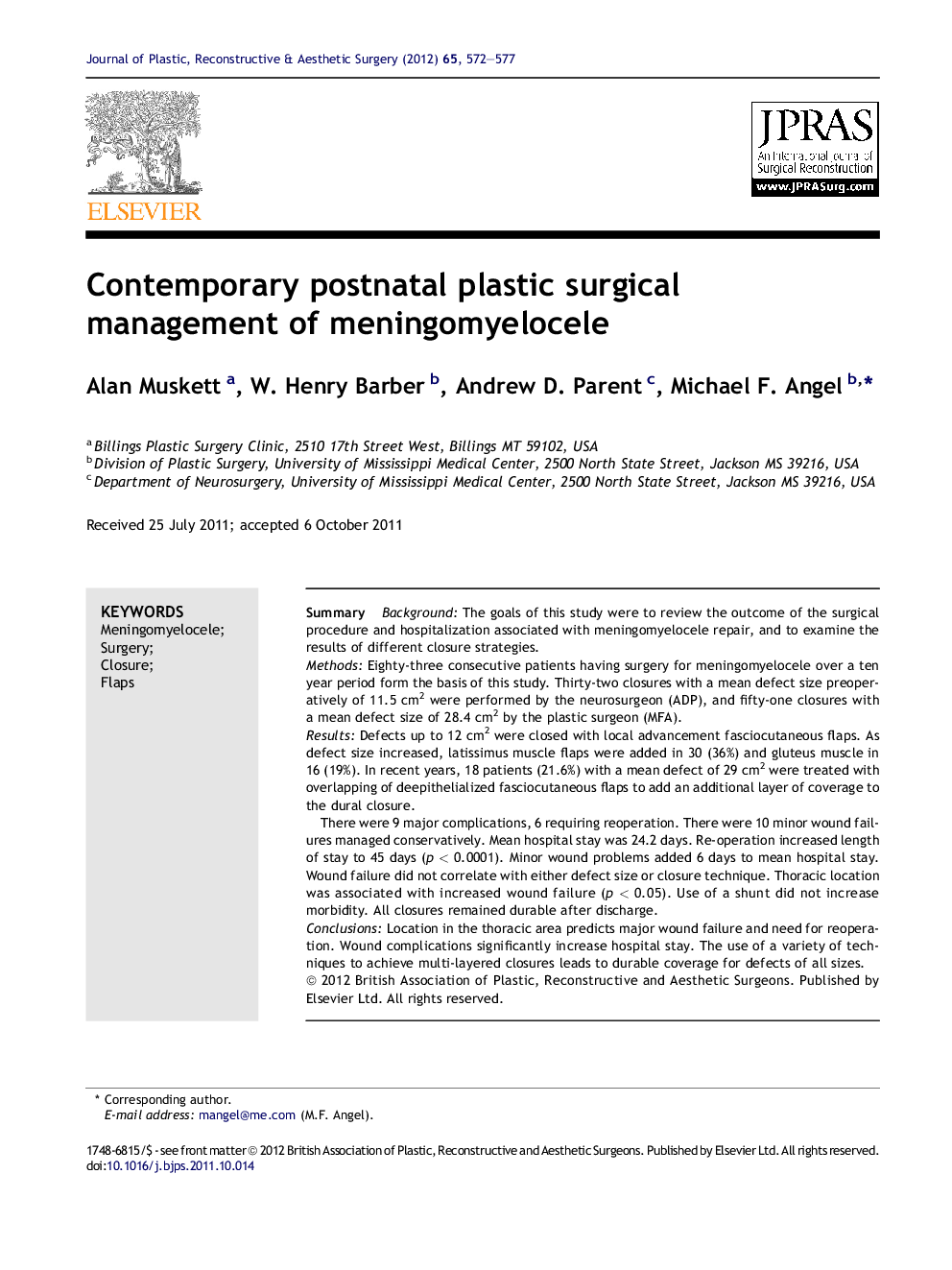| Article ID | Journal | Published Year | Pages | File Type |
|---|---|---|---|---|
| 4119670 | Journal of Plastic, Reconstructive & Aesthetic Surgery | 2012 | 6 Pages |
SummaryBackgroundThe goals of this study were to review the outcome of the surgical procedure and hospitalization associated with meningomyelocele repair, and to examine the results of different closure strategies.MethodsEighty-three consecutive patients having surgery for meningomyelocele over a ten year period form the basis of this study. Thirty-two closures with a mean defect size preoperatively of 11.5 cm2 were performed by the neurosurgeon (ADP), and fifty-one closures with a mean defect size of 28.4 cm2 by the plastic surgeon (MFA).ResultsDefects up to 12 cm2 were closed with local advancement fasciocutaneous flaps. As defect size increased, latissimus muscle flaps were added in 30 (36%) and gluteus muscle in 16 (19%). In recent years, 18 patients (21.6%) with a mean defect of 29 cm2 were treated with overlapping of deepithelialized fasciocutaneous flaps to add an additional layer of coverage to the dural closure.There were 9 major complications, 6 requiring reoperation. There were 10 minor wound failures managed conservatively. Mean hospital stay was 24.2 days. Re-operation increased length of stay to 45 days (p < 0.0001). Minor wound problems added 6 days to mean hospital stay. Wound failure did not correlate with either defect size or closure technique. Thoracic location was associated with increased wound failure (p < 0.05). Use of a shunt did not increase morbidity. All closures remained durable after discharge.ConclusionsLocation in the thoracic area predicts major wound failure and need for reoperation. Wound complications significantly increase hospital stay. The use of a variety of techniques to achieve multi-layered closures leads to durable coverage for defects of all sizes.
